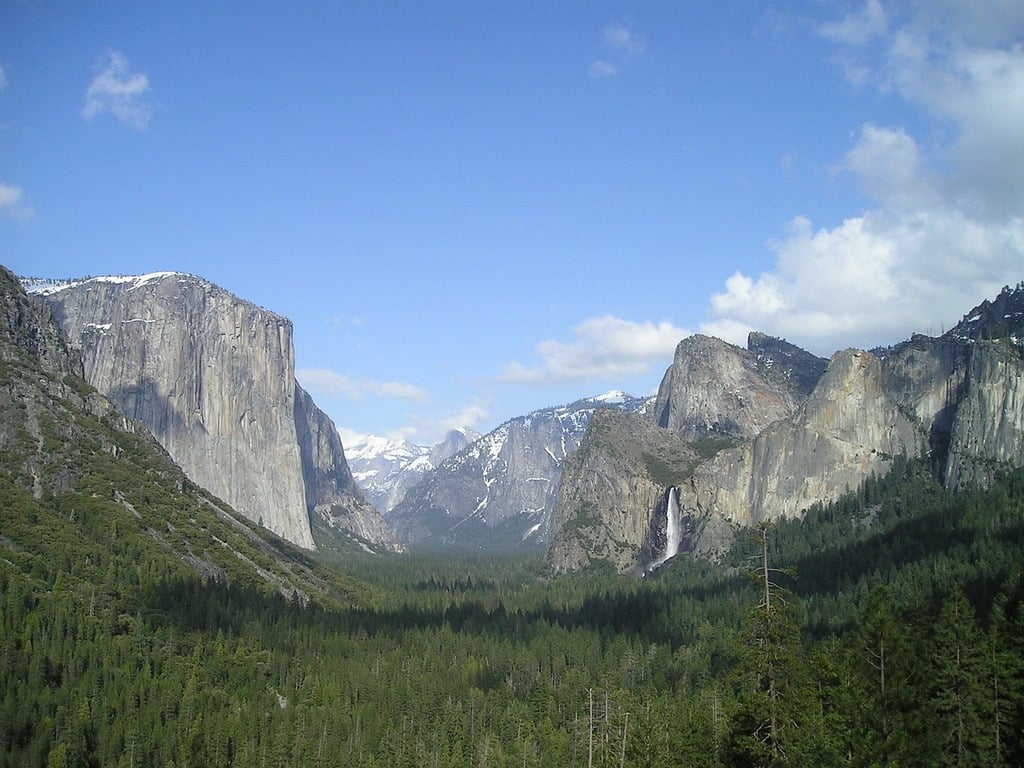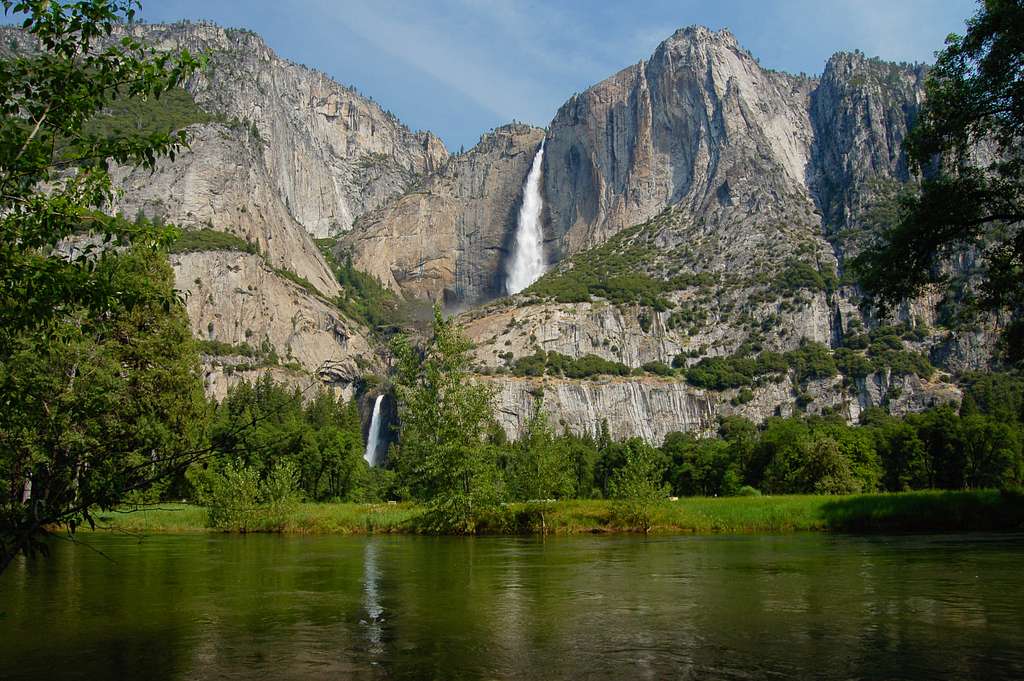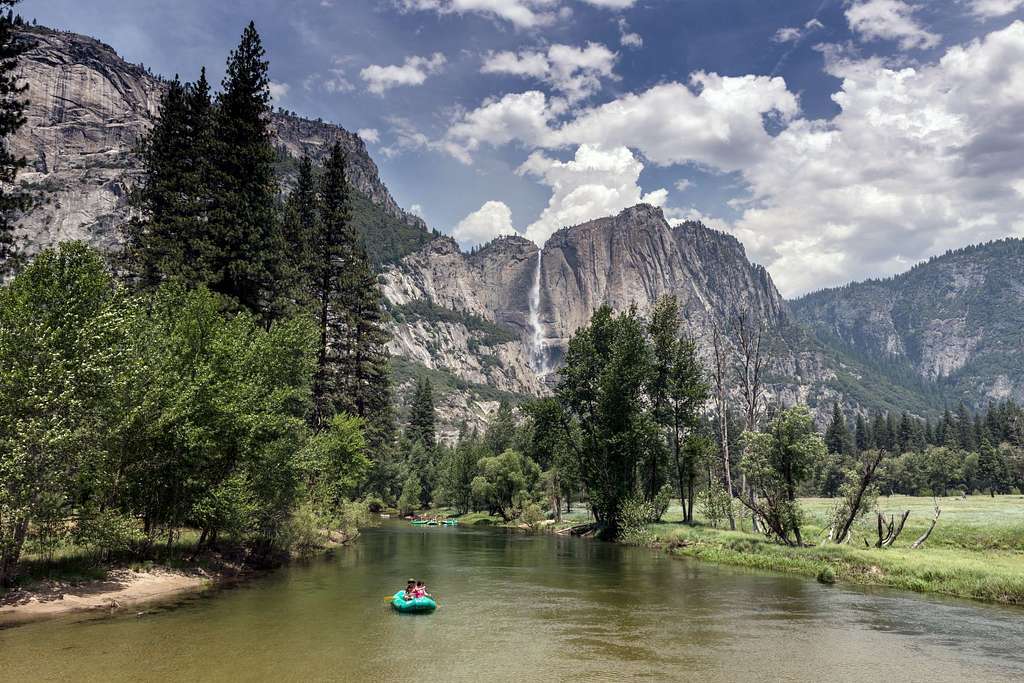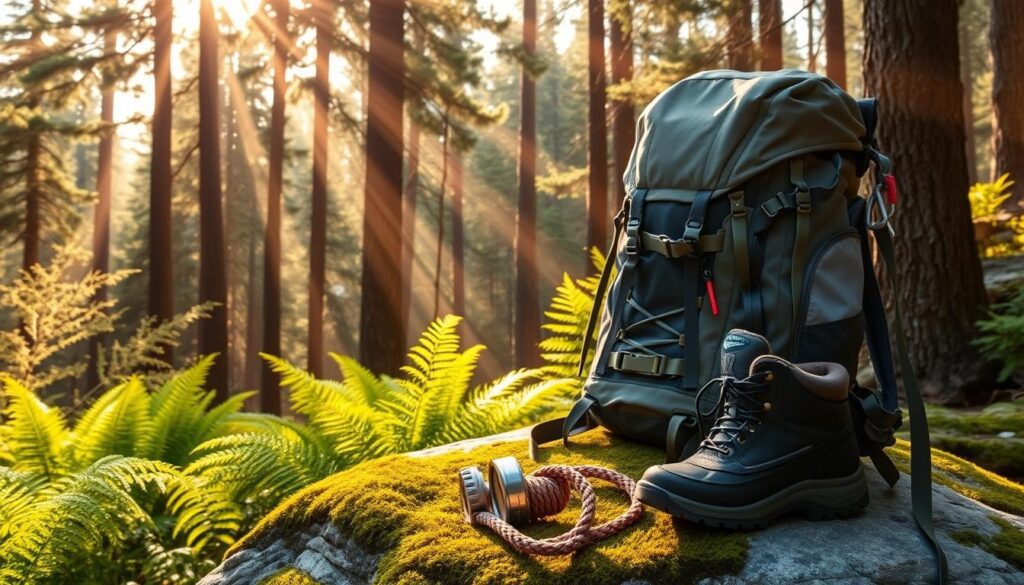There’s a rhythm to walking through the Hiking trails of Yosemite National Park—a pulse that quickens as granite cliffs pierce the sky and meadows stretch like emerald tapestries. Every time I lace up my boots here, I’m reminded why this place isn’t just a national park—it’s a living storybook. Each path whispers secrets: sunlight filtering through ancient sequoias, waterfalls roaring with spring’s thaw, and valleys cradling quiet moments of awe.

What makes Yosemite Valley extraordinary isn’t just its scale (though those vast horizons do steal your breath). It’s how the land shifts with seasons—icy winters etching crisp lines into rock faces, summers painting wildflowers across alpine meadows. Over the years of exploring, I’ve learned that these routes aren’t just dirt and stone. They’re threads connecting us to something timeless.
In this guide, I’ll share the trails that reshaped my view of adventure. Whether you’re chasing sunrise views from granite peaks or craving the quiet of a hidden grove, Yosemite’s magic lies in its ability to surprise even the most seasoned wanderers. Let’s begin where every journey should: with wonder.
Contents
- 1 Introduction to Yosemite Hiking Adventures
- 2 Understanding Yosemite National Park’s Rich History
- 3 Unforgettable Yosemite Valley Views
- 4 Hiking Trails Yosemite: A Detailed Route Guide
- 5 Exploring Iconic Waterfalls and Granite Formations
- 6 Day Hikes for Every Skill Level
- 7 Planning Your Yosemite Hiking Adventure
- 8 Essential Gear and Safety Tips
- 9 Seasonal Hiking in Yosemite: What to Expect
- 10 Local Insights and Hidden Treasures
- 11 Navigating Trails and Maps: Expert Guidance
- 12 Conclusion
- 13 FAQ
- 13.1 When’s the best time to tackle Half Dome without summer crowds?
- 13.2 Can I explore Mariposa Grove’s giant sequoias with kids?
- 13.3 Is the Mist Trail slippery in spring?
- 13.4 How do I secure a Yosemite Falls Trail permit for sunrise?
- 13.5 Are trekking poles necessary for Glacier Point routes?
- 13.6 What’s underrated near Tuolumne Meadows?
- 13.7 Can I combine Lower Yosemite Falls with valley viewpoints?
Key Takeaways
- Yosemite’s landscapes transform dramatically with seasons, offering unique experiences year-round.
- The park’s trails blend natural grandeur with intimate moments of discovery.
- Iconic granite formations and meadows define the valley’s visual identity.
- Personal stories from exploration reveal hidden aspects of well-known routes.
- Upcoming sections provide practical insights for planning your own adventures.
Introduction to Yosemite Hiking Adventures

My first encounter with Yosemite National Park felt like stepping into a cathedral—granite spires replacing stained glass, waterfalls humming hymns. I still remember gripping my water bottle too tightly on the Mist Trail, eyes wide as rainbows danced in the spray. That day, I learned trails here aren’t just paths—they’re invitations to witness Earth’s raw poetry.
What unfolds in this park defies simple labels. One moment you’re tracing gentle streams through sun-dappled valleys (yosemite hikes for contemplative souls), the next you’re scaling cables up Half Dome’s granite spine (adrenaline’s siren song). The magic? How these extremes coexist—a landscape that challenges and comforts in equal measure.
Let me show you the contrasts through local eyes:
| Route | Distance | Elevation Gain | Reward |
|---|---|---|---|
| Vernal Fall Loop | 3 miles | 1,000 ft | Thundering cascades |
| Clouds Rest | 14.5 miles | 3,100 ft | 360° valley panoramas |
| Tuolumne Meadows | Variable | Gentle | Alpine wildflower fields |
That initial Mist Trail journey taught me something vital—Yosemite National Park doesn’t just change with the seasons. It transforms you. The roar of water meeting granite becomes a heartbeat. Sun-warmed stone under your palms feels like communion. And every switchback? A chance to rewrite your limits.
Come with me beyond the trailheads. We’ll decode the whispers in ancient sequoia groves and find the quiet corners where light paints cliffs gold. This isn’t about conquering peaks—it’s about letting the land leave its fingerprints on your soul.
Understanding Yosemite National Park’s Rich History
Every step here echoes with whispers of centuries past. I once stumbled upon a weathered stone mortar near Mirror Lake—left by Miwok tribes who ground acorns here long before park boundaries existed. These lands don’t just showcase nature’s artistry; they’re palimpsests bearing layers of human stories.
Historical Landmarks in Yosemite
The Ahwahnee Hotel’s timbered halls tell tales of 1920s glamour, while Sentinel Rock stands sentinel over Indigenous trade routes. Even popular day hikes reveal surprises: rusted mining equipment half-buried near Glen Aulin, pioneer names carved into aspen trunks. Each artifact whispers, “Look closer.”
| Landmark | Era | Significance |
|---|---|---|
| Mariposa Grove | 1850s | First protected sequoias |
| Pioneer Cemetery | 1870s | Early settler graves |
| LeConte Memorial | 1904 | Conservation education hub |
The Evolution of a National Treasure
What began as untouched wilderness became a battleground between loggers and visionaries. John Muir’s pen clashed with axes until 1890, when Congress carved these 1,500 square miles into legend. Now, granite domes like El Capitan aren’t just climbing challenges—they’re monuments to persistence.
Next time you pause on a sunlit trail, consider this: your bootprints overlap with Indigenous hunters, gold rushers, and artists who fought to keep this wonder wild. That’s the real magic—walking through living history.
Unforgettable Yosemite Valley Views
Sunlight fractures differently here—catching mist from Bridalveil Fall one moment, bouncing off El Capitan’s face the next. Each mile along the valley’s rim feels like turning pages in a geologic epic. I once counted seventeen distinct cascades in a single afternoon, their white ribbons contrasting with granite so ancient it predates continents.
Panoramic Outlooks of Yosemite Valley
At Glacier Point, the world unfurls like a living map. Half Dome rises like a stone titan, while Yosemite Falls hums with primordial energy. Morning light here performs alchemy—transforming waterfalls into liquid gold, cliffs into rusted iron. Every way you pivot reveals new theater: cloud shadows racing across meadows, raptors carving arcs in cerulean sky.
I’ve learned to measure distance here not in steps, but in revelations. That fifth switchback? Where rainbow mists kissed my cheeks. Mile eight? Where sunset set the entire valley ablaze. Even familiar routes surprise—a hidden overlook near Taft Point where granite drops sheer into oblivion, or spring days when snowmelt births temporary cascades.
These vistas don’t just impress—they recalibrate your sense of scale. Standing before Cathedral Rocks, you grasp how time sculpts landscapes (and souls). The way light dances on the Merced River’s surface at dusk? That’s the land whispering, “Stay awhile.”
Hiking Trails Yosemite: A Detailed Route Guide
Footprints tell stories here—sun-bleached boot marks merging with deer tracks on sandy paths. I once followed a marmot’s zigzag trail near Glacier Point, only to stumble upon a vista where the entire valley unfurled like a parchment map. That’s the magic of these routes: they’re equal parts compass and confession.

Paths Carved by Time
The Four Mile Trail demands respect—3,200 feet of elevation gain in just 4.8 miles. But those switchbacks? They gift you dawn breaking over El Capitan, painting the cliffs burnt orange. For something gentler, the Mirror Lake Loop (2 miles) reflects Half Dome’s grandeur with minimal effort. Both routes share secrets if you linger: falcon nests tucked in crevices, granite polished smooth by millennia.
| Route | Time | View | Difficulty |
|---|---|---|---|
| Upper Yosemite Falls | 6-8 hours | Valley from 2,425 ft | Strenuous |
| Sentinel Dome | 2.2 hours | 360° panoramas | Moderate |
| Cook’s Meadow Loop | 1 hour | Cathedral Rocks reflection | Easy |
Whispers Beyond the Crowds
Last May, I found myself on the Pohono Trail—a 13-mile ribbon tracing the valley’s south rim. For hours, only the wind kept company. At Stanford Point, I watched storm clouds embroider the sky with lightning—a private show few witness. These quieter paths (like Olmsted Point’s lunar landscape) reward patience with solitude.
Adventures for Small Boots
Families thrive on the Lower Yosemite Falls route—paved, stroller-friendly, and ending in mist-kissed laughter. Pro tip: arrive by 8 AM to beat crowds. The Valley Loop Trail’s flat stretches let kids spot woodpeckers while adults marvel at granite giants. Every bend here offers discovery, proving wildness needs no altitude.
Exploring Iconic Waterfalls and Granite Formations
Thunder lives here—not in the sky, but in the pulse of water meeting granite. Standing beneath Yosemite Falls feels like witnessing Earth’s heartbeat, its roar vibrating through your ribs. These places don’t just dazzle—they rewrite your understanding of nature’s scale.
Upper & Lower Yosemite Falls
The lower cascade showers hikers in perpetual mist, rainbows flickering like fleeting secrets. But climb higher—past slick stones and pine-scented air—and the upper tier reveals its raw power. Spring transforms it into a liquid avalanche, while autumn narrows the flow to a silver thread. My guide? Always check the park’s map for seasonal flow predictions—it’s the difference between a postcard scene and a primal spectacle.
| Section | Distance | Key Feature | Tip |
|---|---|---|---|
| Lower Falls | 1 mile | Base viewpoint | Waterproof gear recommended |
| Upper Falls | 7.2 miles | Overlook at 2,425 ft | Start before dawn for solitude |
Granite Marvels: Half Dome and Other Landmarks
Half Dome isn’t just a destination—it’s a celestial compass. Sunrise here etches its silhouette against peach-colored skies, while moonlight turns its face into a ghostly sentinel. Nearby, El Capitan’s sheer wall hosts silent dramas: climbers like tiny spiders weaving upward. For quieter communion, seek Glacier Point’s polished slabs—their metallic glint tells of volcanic fires cooled millennia ago.
- Use the park’s guide app to track sunset angles on granite formations
- Combine multiple places using valley shuttle routes (free map at visitor centers)
- Capture Half Dome’s reflection at Tenaya Creek—dawn offers glass-still waters
These landmarks aren’t mere backdrops. They’re living journals—pages where light writes new stories daily. Come with curiosity, and they’ll whisper tales older than footsteps.
Day Hikes for Every Skill Level
Granite and gravity shape journeys here—but so does choice. Last autumn, I watched a family pause where the Lower Yosemite Falls path forks: left toward thundering mists, right to sunlit meadows. That moment crystallized Yosemite’s gift—adventure tailored to every stride.
Easy Strolls for Beginners
The Cook’s Meadow Loop unfolds like nature’s welcome mat. One mile of flat earth where toddlers chase butterflies and elders lean on walking sticks. You’ll pass a lot of iconic sights here—Half Dome’s reflection in still waters, wild mint scenting the air. Perfect for first-timers craving grandeur without grind.
Strenuous Climbs for Adventurers
Then there’s the Lower Yosemite Falls upper route—a stairway of slick granite and roaring spray. I once counted 632 steps (yes, literally) while guiding a breathless group upward. At the top? A view that turns sweat into triumph. These best hikes Yosemite offers demand grit but repay in liquid thunder and rainbow halos.
| Route | Distance | Elevation | Reward |
|---|---|---|---|
| Bridalveil Walk | 0.5 miles | Flat | Base of iconic cascade |
| Valley Floor Loop | 11 miles | 400 ft | 360° granite panoramas |
| Upper Falls Trail | 7.2 miles | 2,700 ft | Summit vistas |
Between these extremes lie paths for every pulse. The Mirror Lake Trail lets you wade through knee-deep serenity (literally—spring melt turns it into a splash zone). Or tackle Lower Yosemite Falls’ western approach, where afternoon light turns mist into molten gold. A lot depends on your boots—and your willingness to let the land surprise you.
Visitors often ask me: “What’s the best hikes Yosemite has?” My answer? The one that makes your breath catch—whether from effort or awe. Because here, every route writes its own epiphany.
Planning Your Yosemite Hiking Adventure
Charting your path through this wilderness feels like composing a symphony—each trail a note, each vista a crescendo. I’ve learned that the best itineraries dance between iconic landmarks and quiet corners where the land whispers its secrets. Let’s craft yours.
Building a Custom Trail Itinerary
Start with the Upper Yosemite Falls route if you crave drama: its 7.2-mile climb rewards with vertigo-inducing views. Balance it with the Mariposa Grove’s giants—those ancient sequoias humble even the most seasoned explorers. Last spring, I paired these two in a single day: morning mist swirling around 2,000-year-old trunks, afternoon light gilding the falls’ thunderous drop.
| Time | Key Stops | Activity Level |
|---|---|---|
| Half-Day | Mariposa Grove giant sequoias | Moderate |
| Full-Day | Upper Yosemite Falls + Valley Loop | Strenuous |
| Multi-Day | Yosemite Falls Trail + Backcountry | Advanced |
Don’t just follow the Yosemite Falls Trail—own it. Arrive at dawn to beat crowds, pack a lunch to eat beside the cascade’s roar. For hidden magic, add the Pohono Trail’s overlooks—I once watched fireflies ignite there like earthbound stars.
Your boots should match your ambition. Families thrive combining short walks among grove giant sequoias with picnics at Cook’s Meadow. Adventurers? Lace up for sunrise starts and summit sandwiches. The land adapts to your rhythm—if you let it.
Essential Gear and Safety Tips
Preparation here isn’t just packing—it’s a ritual. I learned this the hard way near Mariposa Grove, scrambling to shield my camera from a sudden downpour with a soggy map. Now, my gear list reads like a love letter to foresight: sturdy boots that grip polished granite, layers that breathe through sweat and shiver, and a headlamp for when twilight lingers too long.

What to Pack for a Yosemite Hike
Your bag should balance utility and weight. For the Half Dome hike, I never skip:
- Ankle-supporting boots (trust me—those cable ascents demand stability)
- Collapsible poles for steep descents
- Electrolyte tablets to combat altitude thirst
Near Yosemite Falls, waterproof everything. The mist here laughs at “water-resistant” labels. And if you’re wandering through Mariposa Grove’s giants? A wide-brimmed hat—sunlight filters through sequoias like laser beams.
On-Trail Safety Guidelines
I once watched a hiker near the California Tunnel Tree misjudge a slick root—their slide stopped inches from a granite edge. Now, I preach three rules:
- Check weather hourly—valley storms brew faster than morning coffee
- Carry a physical map (GPS dies where shadows deepen)
- Hydrate before thirst whispers—dehydration numbs judgment
At dusk near Yosemite Falls, temperatures plummet. Pack warmth that outlasts sunset. Remember: the land rewards respect with wonder—but demands vigilance in return.
Seasonal Hiking in Yosemite: What to Expect
Seasons rewrite Yosemite’s trails like a living manuscript—each chapter painted in wildflower hues or baked into sun-bleached stone. I’ve watched spring’s first meltwater carve new patterns into granite, while summer heat turns meadows into golden stages for darting lizards. Timing your journey here isn’t just practical—it’s poetic.
Spring and Summer Trail Conditions
April through June transforms the park into a watercolor palette. Lower Yosemite cascades roar with snowmelt, their mist nurturing rainbows and wildflower explosions. But tread carefully—lingering snowpack near Grizzly Giant sequoias can make higher routes slippery. My boots have learned this dance: sidestepping icy patches one week, crunching through pine pollen the next.
| Season | Elevation Gain | Key Features | Preparation Tips |
|---|---|---|---|
| Spring | Moderate (500-2,000 ft) | Ephemeral waterfalls, dogwood blooms | Waterproof layers, microspikes |
| Summer | High (2,500-4,800 ft) | Dry trails, alpine wildflowers | Sun protection, 3L water minimum |
July’s furnace-like heat demands strategy. Start hikes Yosemite veterans love—like the mist-cooled Vernal Fall route—before dawn. By noon, granite radiates like a skillet, and elevation gain feels twice as steep. I once guzzled a liter climbing to Glacier Point, only to find my water bottle warm as tea at the summit.
- Track Grizzly Giant access via park alerts—spring snowmelt delays trail openings
- Pack electrolyte tabs for summer ascents—dehydration hits faster at altitude
- Snap Lower Yosemite Falls photos before 10 AM—afternoon shadows dull the spectacle
These seasons don’t just change the land—they redefine your relationship with it. Spring whispers promises through budding dogwoods. Summer shouts its glory in sweat and summit views. Choose your season, then let it shape your story.
Local Insights and Hidden Treasures
True magic in this park lives beyond trail markers—in the hush of unnamed meadows and granite alcoves untouched by footsteps. I once followed a creek’s murmur near Tenaya Lake and found a waterfall locals call “Whispering Sisters,” its tiers hidden behind curtains of manzanita. These spaces don’t shout for attention—they wait to be discovered.
Insider Tips for Uncommon Trails
Skip the postcard routes at dawn. Instead, head to May Lake’s eastern shore, where sunrise paints Mount Hoffmann in liquid gold. For day hikes with soul-stirring payoffs, the best Yosemite secrets often lie in plain sight:
| Trail | Distance | Hidden Feature | Crowd Level |
|---|---|---|---|
| Fern Spring Loop | 1.8 miles | Year-round waterfall | Low |
| Pothole Dome | 2.4 miles | Granite tide pools | Moderate |
| Elizabeth Lake | 4.6 miles | Alpine lily fields | Very Low |
Last October, a park ranger tipped me off about McClure Meadow—a stretch of the best hikes you’ll never find on brochures. Its grasses ripple like liquid copper under autumn light, framed by peaks even seasoned climbers rarely name. Bring binoculars: bald eagles nest here, their cries echoing off canyon walls.
Want solitude? Trek the day hikes near Tioga Pass after 3 PM. Most visitors retreat by then, leaving granite basins to glow in honeyed twilight. I’ve watched marmots perform sunset rituals there, standing sentinel on warm stones as shadows swallow valleys below.
Maps here breathe—their contour lines tracing the land’s pulse. I once unfolded a park map near Nevada Falls, its creases hiding stories of granite staircases and hidden springs. Understanding these guides isn’t just navigation—it’s learning the syntax of wilderness. Like deciphering a love letter from the land itself.
Interpreting Trail Maps and Elevation Data
Contour lines reveal secrets. Study the spacing—tight lines mean steep climbs. Wide curves? Gentle slopes. On the Mist Trail map, I spotted a cluster near Nevada Falls—a 600-foot climb in half a mile. That’s the land whispering, “Prepare your calves.”
| Trail Feature | Map Symbol | Real-World Meaning |
|---|---|---|
| Switchbacks | Zigzag lines | Steep elevation gain ahead |
| Water sources | Blue dashes | Filtering opportunities |
| Summit markers | Star icons | 360° view payoff |
Technology complements instinct—it doesn’t replace it. Last summer, my GPS froze near Upper Yosemite’s backcountry. But the map’s elevation profile had burned into my memory—those squiggles warned of a hidden ravine. Always carry both:
- Download offline maps for loop trail routes (cell service vanishes fast)
- Set waypoints at junctions—they’re breadcrumbs for your return
- Calibrate compasses on flat granite—magnetic rocks can skew readings
On the John Muir Trail section near Nevada Falls, I once watched a hiker pivot confidently using stacked rocks as markers. That’s the sweet spot—where tech and tradition dance. Your map isn’t just paper. It’s a conversation with the wild.
Conclusion
Wilderness etches itself into memory here—not through grandeur alone, but in quiet moments between footsteps. Each journey through this land reshapes perspective: dawn light gilding Tioga Pass’s peaks, afternoon shadows pooling beneath giant sequoias older than empires. What begins as exploration becomes communion—a dialogue with earth’s raw poetry.
Carry these lessons along the way. Let mist from hidden falls cool your face. Watch storm clouds embroider horizons beyond marked paths. Every curve in the road, every weathered boulder, holds stories waiting to rewrite yours.
This sanctuary, where nature and history collide, doesn’t just deserve visitors—it needs witnesses. Those who’ll pause where sunlight filters through ancient groves, feeling time’s weight and fragility simultaneously. From Tioga Pass’s alpine vistas to the whispering groves of giant sequoias, your adventure awaits in the spaces between maps and miracles.
FAQ
When’s the best time to tackle Half Dome without summer crowds?
Aim for late September—cooler temps, thinner crowds, and golden light kissing the granite. Just watch for early snow dustings near Tioga Pass.
Can I explore Mariposa Grove’s giant sequoias with kids?
Absolutely! The Big Trees Loop (0.3 miles) lets little ones marvel at the Grizzly Giant. Bring binoculars—you’ll spot woodpeckers drumming on 2,000-year-old bark.
Is the Mist Trail slippery in spring?
Like walking through a cloud’s heartbeat—yes! April showers drench the path near Vernal Fall. Wear grippy shoes and embrace the rainbow mists swirling around Nevada Fall’s base.
How do I secure a Yosemite Falls Trail permit for sunrise?
Snag permits via Recreation.gov at 7 AM PST, 7 days ahead. Pro tip: Midweek dates vanish slower. Start pre-dawn—the valley’s first light on Upper Yosemite Fall? Pure magic.
Are trekking poles necessary for Glacier Point routes?
For the Four Mile Trail’s 3,200-foot climb? Your knees will thank you. But on Pancake Dome’s flatter paths? Save the poles—let your hands brush sun-warmed granite instead.
What’s underrated near Tuolumne Meadows?
Elizabeth Lake Trail—a 4.6-mile secret where alpine wildflowers frame Cathedral Peak. I once startled a mule deer herd there at golden hour—no cameras, just memory fuel.
Can I combine Lower Yosemite Falls with valley viewpoints?
Yes! Link the 1-mile falls loop with Cook’s Meadow stroll. You’ll get Bridalveil’s spray on your neck and Half Dome’s silhouette burning into your retinas—all before lunch.



